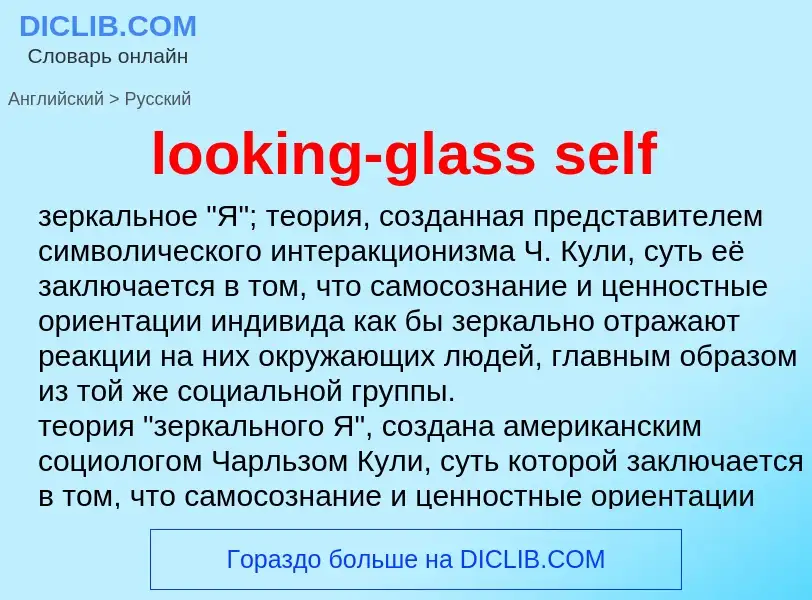Vertaling en analyse van woorden door kunstmatige intelligentie ChatGPT
Op deze pagina kunt u een gedetailleerde analyse krijgen van een woord of zin, geproduceerd met behulp van de beste kunstmatige intelligentietechnologie tot nu toe:
- hoe het woord wordt gebruikt
- gebruiksfrequentie
- het wordt vaker gebruikt in mondelinge of schriftelijke toespraken
- opties voor woordvertaling
- Gebruiksvoorbeelden (meerdere zinnen met vertaling)
- etymologie
looking-glass self - vertaling naar russisch
общая лексика
зеркало
существительное
общая лексика
зеркало
Wikipedia

The term looking-glass self was created by American sociologist Charles Horton Cooley in 1902, and introduced into his work Human Nature and the Social Order. It is described as our reflection of how we think we appear to others. Cooley takes into account three steps when using "the looking glass self". Step one is how one imagines one looks to other people. Step two is how one imagines the judgment of others based on how one thinks they view them. Step three is how one thinks of how the person views them based on their previous judgments.
According to Lisa McIntyre's The Practical Skeptic: Core Concepts in Sociology, the concept of the looking-glass self expresses the tendency for one to understand oneself through the perception which others may hold of them.


